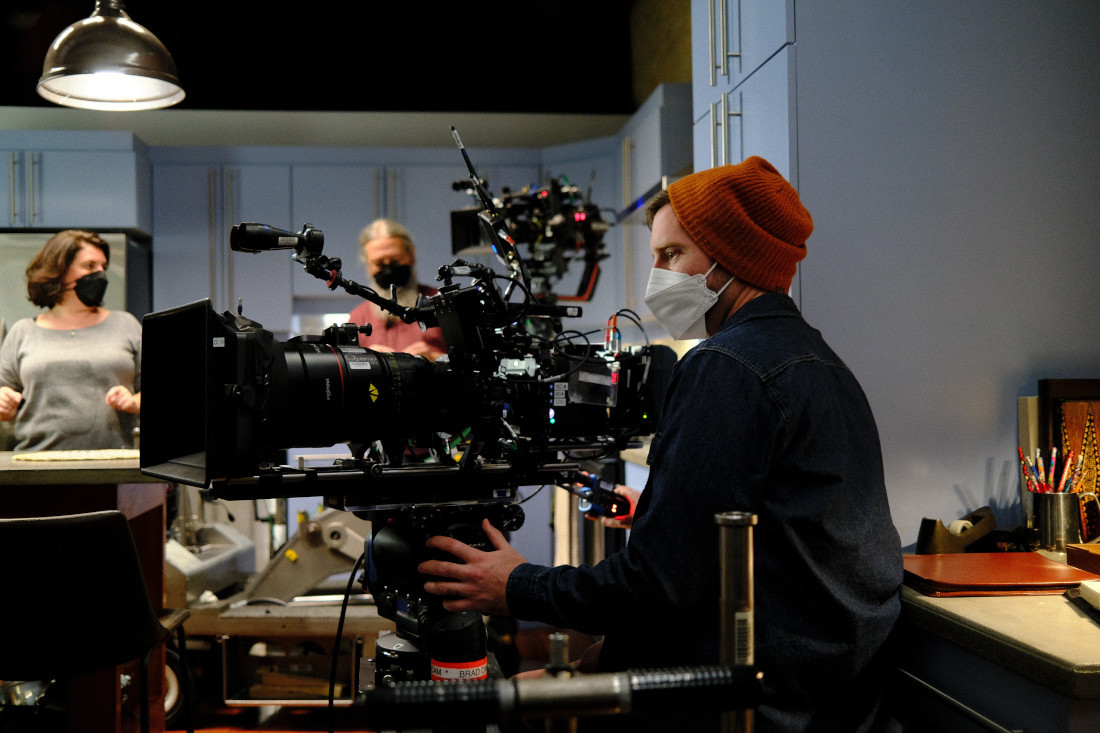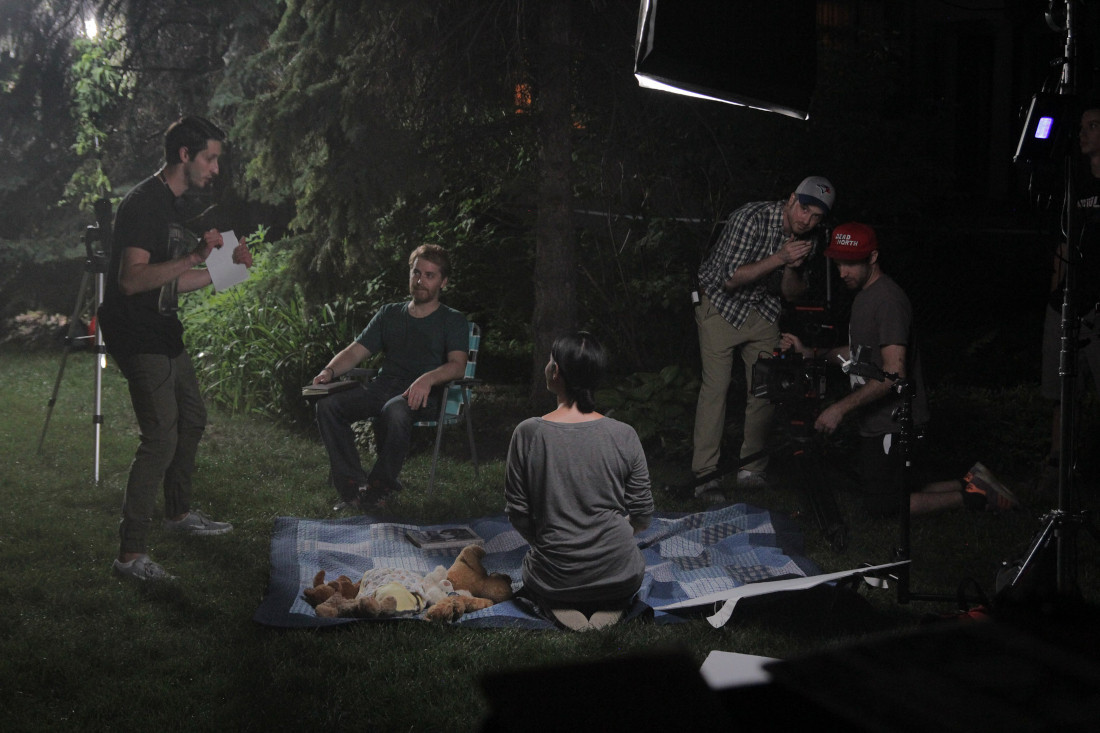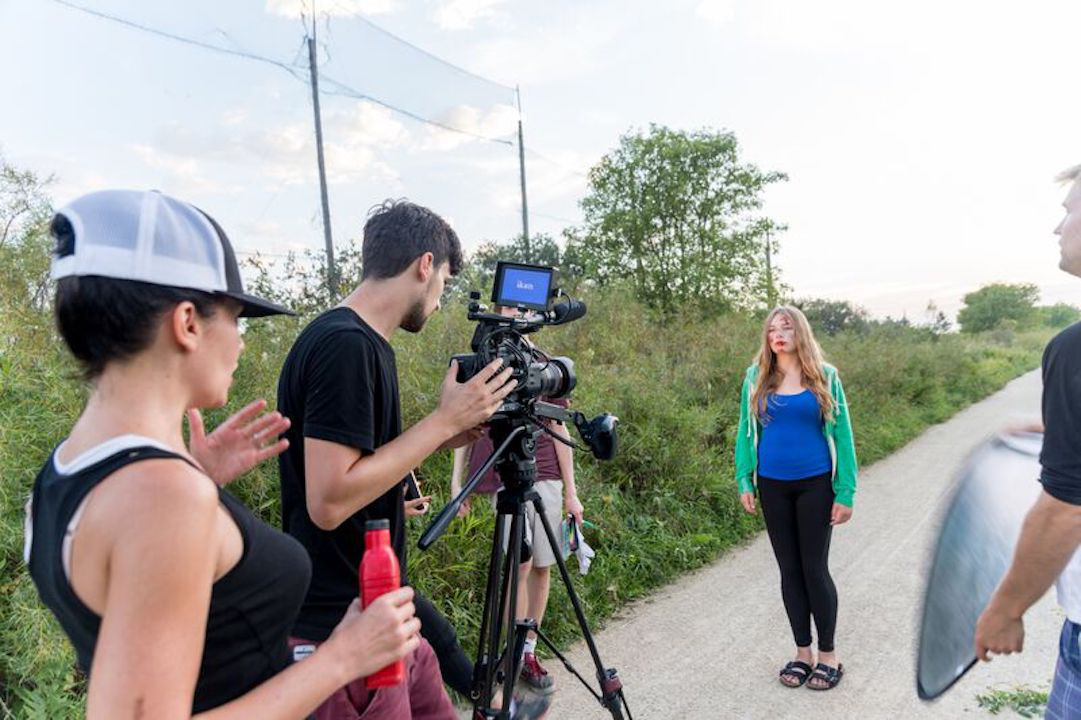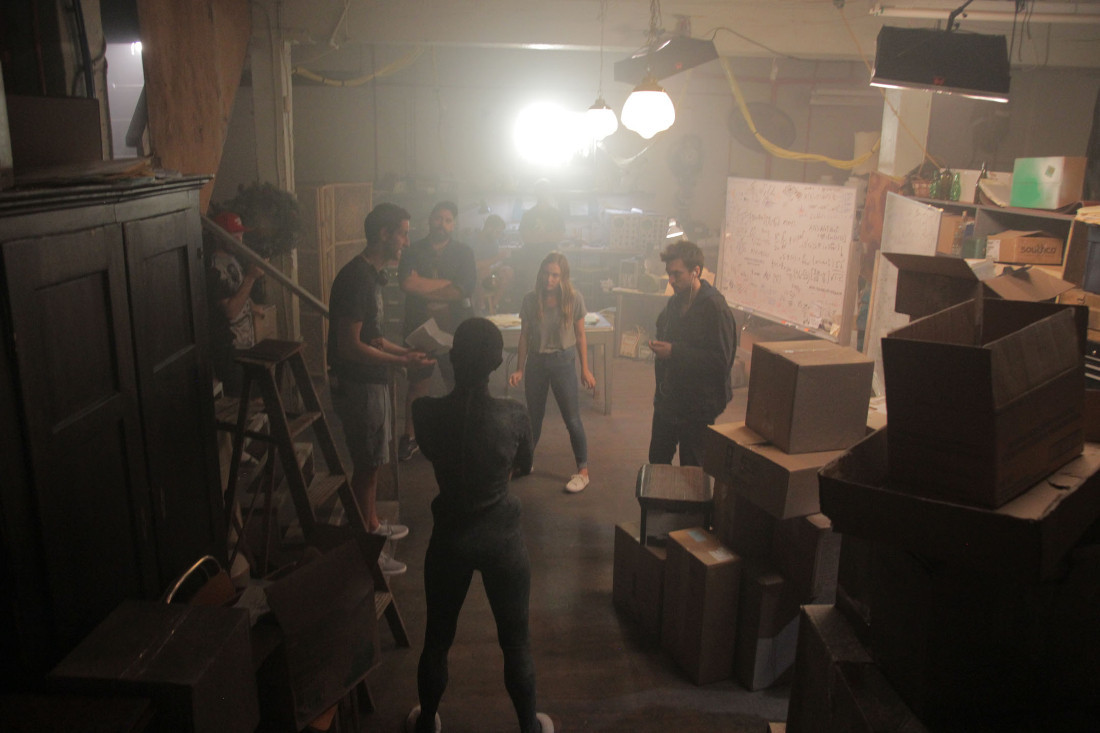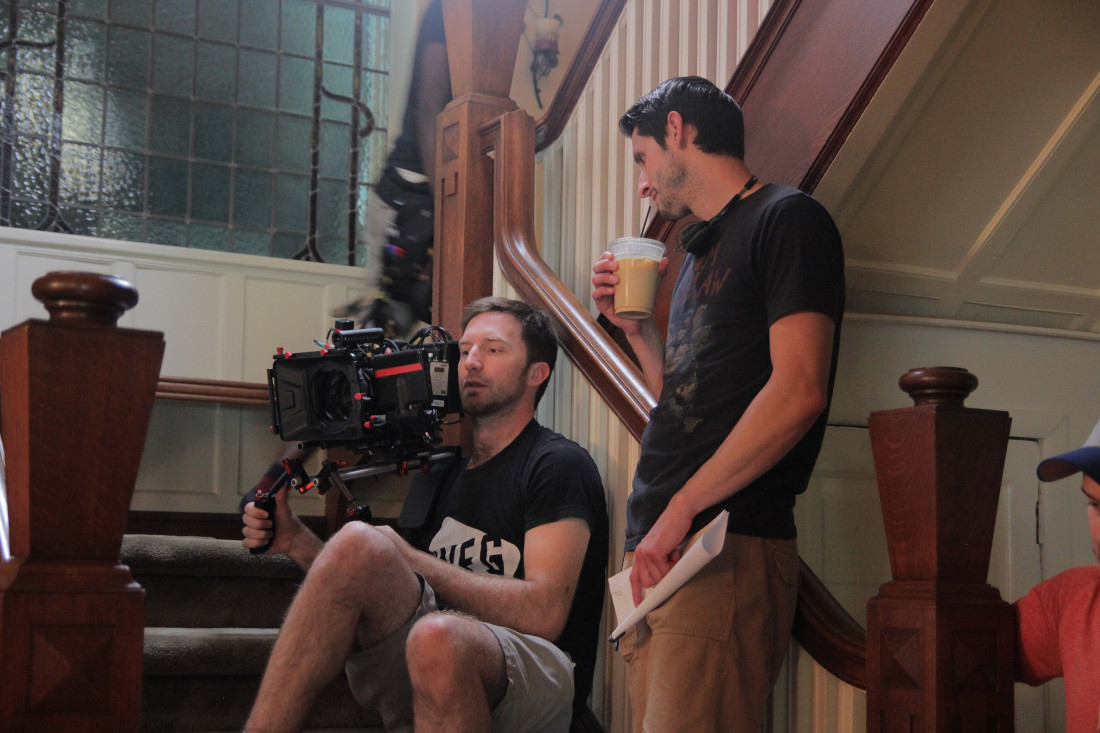Frozen streets paved with gold
How Winnipeg’s burgeoning film scene is good news for everyone
Here in the dead of a frozen Canadian winter, the palm trees of Hollywood can seem lightyears away. But if local stories of rubbed elbows with A-listers and downtown street closures seem more plentiful these days, it could be more than movie-buff gossip.
“It’s blowing up,” BJ Verot, screenwriter, director and co-founder of Strata Studios, says.
“It’s been very busy. It’s been awesome, because all these projects are coming to town. Honestly, if people are interested in getting involved in f ilm, now is the time.”
Winnipeggers may scoff at the notion of a landlocked, frigid town as an ideal place to make big-screen magic. However, the city’s location can make it an enticing place for production.
“Our geography is in the middle of North America, really. It’s a good hub area, and it’s not overexposed in terms of when you look at the folks doing Lifetime and Hallmark and so on,” Phyllis Laing says. She’s the executive producer and founder of Buffalo Gal Pictures, a Winnipeg-based TV and film production company.
Her company produced 2015’s Hyena Road and collaborations with Guy Maddin, as well as recent Indigenous comedy series Acting Good. Laing’s experience in the local f ilm scene goes back nearly four decades prior to her founding Buffalo Gal in 1994. Laing cites an experienced workforce and low permit costs as other incentives.
“It’s not as expensive of a place to shoot as some of the main centres. And economically, we can make it advantageous for them. So, it makes sense for them.”
Equity, accessibility and opportunity
The advent of streaming services and other forms of digital media have made film and TV production as lucrative as ever, but other factors are stoking its growth, especially in Manitoba.
Filmmaking is no longer restricted to the select few privileged enough to have a camera, an editing machine and a network of potential collaborators. Now, people only need a smartphone.
“Everybody has a camera. Everybody has a phone. Everybody has editing software,” Verot says.
Laing agrees. “Young filmmakers now don’t have as many barriers as they used to have. There are lots of ways to get your product viewed,” she says.
As filmmaking becomes more accessible, both creators and the types of content they produce are becoming more diverse.
“One thing that remains the same is that consumers want more and more, and more and more different types of content. There are so many places between streamers to web to YouTube to all the various types and ways you can get stories and media out there,” Laing says.
Winnipeg-based company Eagle Vision is responsible for ongoing TV dramas like Burden of Truth, as well as major tentpole productions shot in Winnipeg like Orphan: First Kill and Capote. They recently produced Reclaim(ed), a 10-part docuseries exclusive to messaging app Snapchat, of all places.
Rebecca Gibson, filmmaker and co-owner of Eagle Vision, says, “We did Snapchat’s first Canadian original series, and it was a big success. We work in all mediums.”
“There was an outcry for more diversity in content creation. That provided an opportunity for people who might not have had the chance to have their voices heard or their stories shared. For our company, everything that we do goes into ceremony with Indigenous Elders.”
The Elders approved of the production citing its importance to youth.
With traditional filmmaking barriers broken, a new array of people can make films reflecting their realities. In a city as diverse as Winnipeg, storytelling opportunities are limitless.
“You have a growing and stronger Indigenous filmmaking community. You have a French community that’s really evolved,” Laing says. “Especially among the younger filmmakers, it’s great to see them getting their own projects done. (Buffalo Gal Pictures) doing the first Indigenous mainstream comedy was great. There’s lots of evolution, and it will continue to evolve. It always does.”
Taxation is a gift
Film production is still largely a logistical endeavour, and finances are the most persistent hurdle. While the film industry continues to grow due to the rise of technological accessibility and inclusion, the growth in Manitoba film is exponentially larger.
“The first year I started, there was about $500,000 worth of film production, and it’s certainly grown many, many thousands of dollars beyond that at this stage,” Laing says.
In 2022, Manitoba had its most successful year in film, with $365 million in production volume. That’s a major increase from not only decades past, but even as recently as 2018’s $157 million production volume.
Production in Winnipeg has its draws, including new direct flights to and from Los Angeles to attract Hollywood talent. But the biggest incentive for filmmakers is the province’s uber-competitive tax credits. “
It stands out not just in Canada, but in North America as one of the top tax credits. Right now, with the dollar, it’s a big factor,” Laing says.
The Manitoba film and video production tax credit allows production companies to recoup as much as 65 per cent of eligible salaries paid for work performed on an eligible film.
“It’s what brings all of these American studios to town,” Verot says.
“If you spend $100,000 on labour, you’re getting $65,000 back. You spend a million on labour, and you’re getting $650,000 back. It brings a lot of money to the province, and it just helps kind of push that money a little bit further. It’s generated so much work and so many projects, and it’s just continuing to grow.”
Taxpayers rest assured, the growing industry pays dividends toward the local economy, as reflected by the provincial government’s continuous efforts to promote the town as a filmmaking hub.
“It’s very good for the province. All those crew people pay taxes, same with cast. The economic impact is higher than the incentives. It makes sense economically for the province to attract this business because of its impact,” Laing says.
Trials, tribulations and tripods
Oversaturation is inevitable, especially considering the general boom in film production and lucrative nature of the business. Winnipeg, an increasingly viable place to make films, is no exception.
“I think that filmmaking in general is quite saturated,” Verot says. “Going back to the late 2000s and early teens, it was a lot different. It wasn’t busy as it is now.”
Brad Crawford, Verot’s business partner and co-founder of Strata Studios, speaks to oversaturation as someone who works specifically in production.
“The biggest hurdle legally is the inability to get road closures and dealing with the city’s infrastructure and trying to work around those limitations, specifically now as the industry gets busier and busier,” he says.
“The city and the province are getting stricter in that regard. It’s more of a challenge.”
While the production crews based in Winnipeg are reputedly of high quality, the problem lies in quantity. Production companies note the dearth of technical talent available at their disposal at any given moment.
Gibson says production companies are trying to attract more people to the film industry, so that they’re able to better create work. “We’ve had to turn down some dream projects because we don’t have all the crew that we (need) to make things work,” she says.
However, Gibson mentions, the crews present in Winnipeg “are great.”
The problem is exacerbated by the influx of major studios coming to town for tax credits. They often hire local production companies and crew for service producing, drawing talent away from homegrown productions.
“When a lot of projects come, and they’re all going at the same time, you do notice that it does get a little bit light. When a big juggernaut like that comes to town, we’re just trying to plan around when they’re shooting so we can get some crew,” Verot says.
“Everyone gets sucked up by the big one, because it’s better money and (a) longer time period, so it’s more attractive,” Crawford says. “Basically, we have to call in favours at that point.”
However, the growing local film scene sees an average of $1,000,000 in production every single day. These are small grievances for filmmakers experienced in a capricious industry.
“Everything is always expanding and contracting based on so many different parameters. You’ve got to be flexible. You’ve got to be versatile,” Verot says. In today’s film industry, the best place to start is right at home.
“I think it’s important that Winnipeg understands that they have something really exciting and vibrant and thriving, and that it’s something that should be celebrated. I think we’ve got lots of cool projects that happen here. I love the film industry here,” Crawford says.
Published in Volume 77, Number 18 of The Uniter (February 9, 2023)

